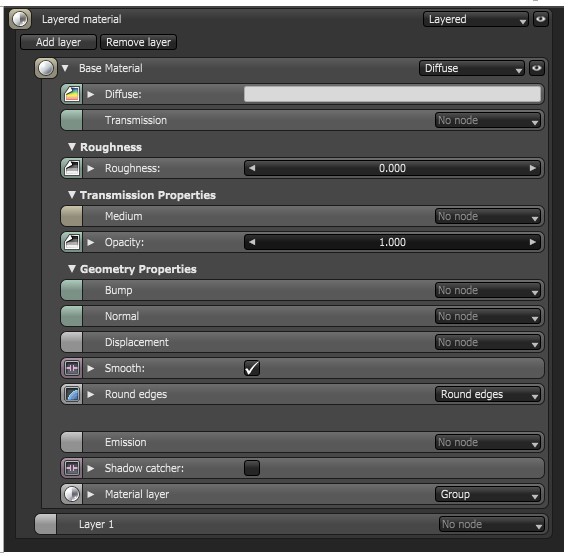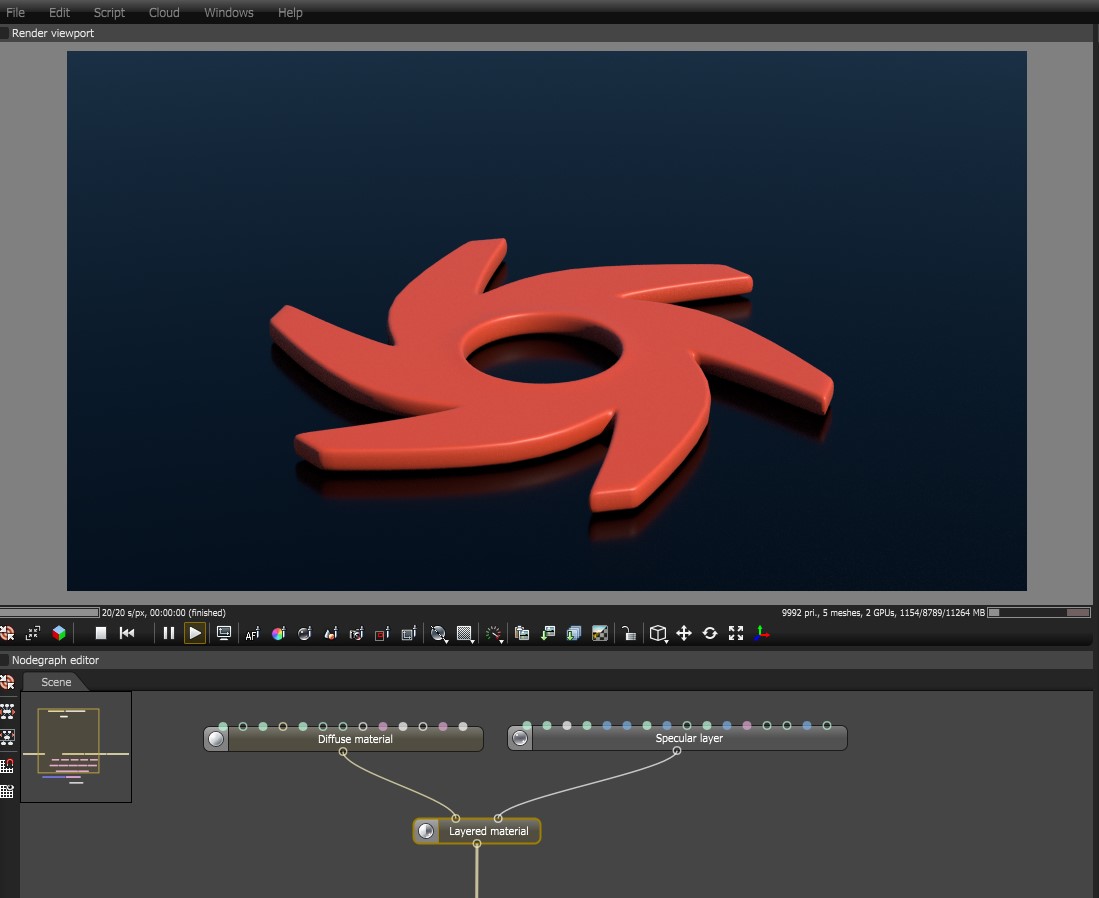
The Layered material node constructs complex materials that consist of a base layer and up to eight MaterialThe representation of the surface or volume properties of an object. Layers. You can create complex materials in a physically-based manner, as opposed to manually mixing materialsUsed to mix any two material types. together.

Figure 1: Layered material node parameters
Add Layer - Adds a new Layer input to the end of the Node. You can add up to eight Layer inputs.
Remove Layer - Removes the last Layer input on the node.
Base Material - The material that sits below any additional Material Layers.
Layer 1 - 8 - The Material Layer inputs.
With the Layered material, you are given all Material Layers used in OctaneRender®, allowing you to reconstruct pre-existing Octane materials or your own uber-material.

Figure 2: Recreating the GlossyThe measure of how well light is reflected from a surface in the specular direction, the amount and way in which the light is spread around the specular direction, and the change in specular reflection as the specular angle changes. Used for shiny materials such as plastics or metals. Material by using a Diffuse materialUsed for dull, non-reflecting materials or mesh emitters. and a SpecularAmount of specular reflection, or the mirror-like reflection of light photons at the same angle. Used for transparent materials such as glass and water. layer